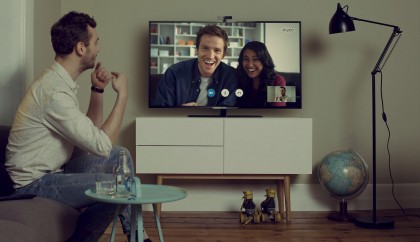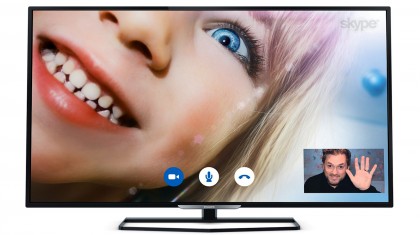Why you can trust TechRadar
With an alarming number of 2014's TVs – even expensive ones – failing to impress with their pictures this year, it's a massive relief to find this highly affordable Philips model delivering dark scenes with real aplomb.
Parts of pictures that should look black actually look black – or, at any rate, they get much closer to a convincing black tone than the vast majority of other similar-sized TVs around for under £550. There's precious little of the misty, milky greyness in dark scenes that betrays low-contrast panels.

This impressive contrast performance isn't just the result of heavy duty manipulation of the backlighting, either. You can tell this from the way the 48PFT5509 retains good levels of luminance for bright parts of predominantly dark images, and the way even the darkest sections of a picture are reproduced with subtle detailing still visible within them. On sets with weaker native contrast it's common to find the darkest parts of images looking hollow and flat.
Meanwhile, as long as you don't leave the image set too bright, dark scenes remain largely free of the backlight clouding and brightness 'twitches' that often prove distracting on sets that have to work harder to deliver a convincing black colour.
Another startling strength of the 48PFT5509 is the sharpness of its HD pictures. These sometimes look so detailed and crisp, in fact, that they appear slightly higher than HD in resolution, especially if you've got the super resolution tool in play.
In fact, using the TV's default settings pictures can look a bit too sharp, tipping parts of the image into noise and making some edges look stressed and over-defined. With careful adjustment of the super resolution mode and the separate sharpness setting, though, you can get pictures so that they still look remarkably crisp for such an affordable TV but also look more natural and 'even'.

The 48PFT5509's inherent sharpness does ironically highlight a little motion blur from the screen when there's a lot of movement in the frame. But in reality this blur isn't that big a deal by the standards of the budget TV world at large. It's just a potential reason to spend more on a high-quality, mid-range TV rather than any sort of deal breaker – especially as the set's motion handling doesn't generate many unwanted processing artefacts.
In fact, strangely, the whole picture looks more natural and less 'processed' than we would have expected based on our recollections of Pixel Plus HD from years gone by.
Black levels as good as those delivered by the 48PFT5509 are usually accompanied by a strong colour performance. And so it proves here, as the 48PFT5509 delivers a winning combination of natural, subtle toning; minimal colour banding or blocking; and engagingly dynamic, punchy tones. Many budget TVs look either too rudimental with their colour toning (leaving video sometimes looking like animation) or produce tones with PC-biased temperatures. But not this Philips set.
Yet more good news came from my tests of the 48PFT5509's input lag – the time it takes for its screen to produce pictures having received image data at its inputs. I measured a figure on average of just over 30ms when using the provided game/PC 'activity' modes, which shouldn't be high enough to have any serious impact on your gaming abilities.
There are one or two signs of the 48PFT5509's affordability, inevitably. I've already mentioned its susceptibility to a little motion blur, but there can also be some judder too. Next, while the sharpness is generally well judged if you're careful with the super resolution setting, some very grainy sources can look a bit too 'alive' with dot crawl no matter what you do with the settings.
Sharp camera pans can reveal a slight glow to areas of very fine detail too, and finally the 48PFT5509 isn't the best upscaler of standard definition, leaving SD broadcasts and poor-quality DVD transfers looking a touch fuzzy and blocky. Also, more strangely, colours look much more basic/short of tonal subtlety with SD than they do with high definition, while dark parts of SD pictures tend to look a little too dominant, losing the good balance noticeable with HD.
Still, there's no shortage of HD sources available to us today, so it shouldn't be too hard to keep the TV fed and watered on HD for the majority of your viewing time.
Current page: Picture Quality
Prev Page Introduction and features Next Page Usability, sound and valueJohn has been writing about home entertainment technology for more than two decades - an especially impressive feat considering he still claims to only be 35 years old (yeah, right). In that time he’s reviewed hundreds if not thousands of TVs, projectors and speakers, and spent frankly far too long sitting by himself in a dark room.

